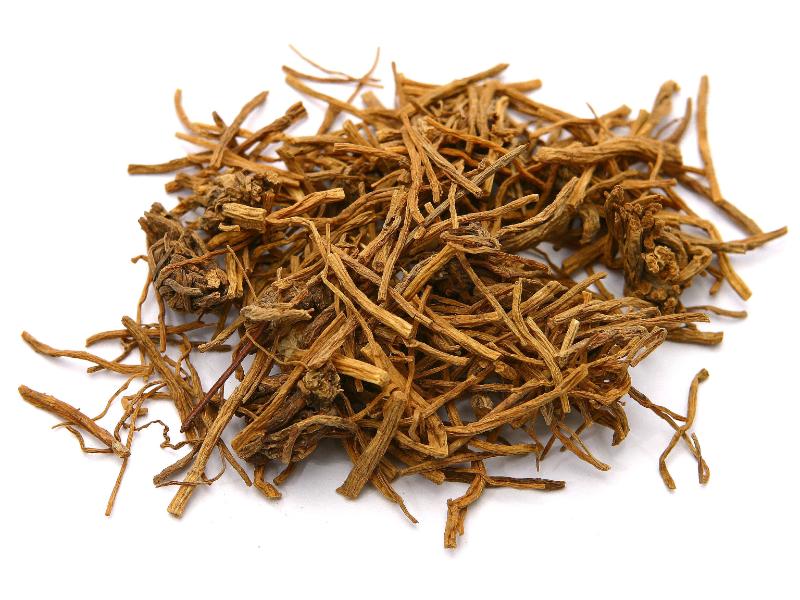Search in medicinals
Gentianae Radix
Gentian [root]
龙胆 〔龍膽〕 lóng dǎn

Alternate Chinese names: 龙胆草 lóng dǎn cǎo; 草龙胆 cǎo lóng dǎn; 苦龙胆草 kǔ lóng dǎn cǎo; 地胆草 dì lóng cǎo; 四叶胆 sì yè dǎn; 龙胆草 lóng dǎn cǎo; 胆草 dǎn cǎo
Kingdom: Plant
Origin in PRC Pharmacopoeia: Gentiana scabra Bge.; Gentiana triflora Pall.; Gentiana manshurica Kitag.; Gentiana rigescens Franch. (PRC Pharmacopoeia)
Origin in unofficial sources: Gentiana scabra Bge.*; Gentiana triflora Pall.*; Gentiana manshurica Kitag.*; Gentiana rigescens Franch.*; Gentiana rigescens Franch. var. stictantha Marquand; Gentianopsis paludosa (Munro) Ma
Use: Medicinal
Category: Heat-clearing agents / Heat-clearing dampness-drying agents
Properties: Bitter; cold.
Channel entry: Liver, gallbladder, stomach, and bladder channels. some primary texts do not list the bladder, while others do not list the stomach channel channels.
Actions and indications:
- Clears heat and dries dampness: Vaginal discharge, itching and swelling of the genitals, eczema, or jaundice with reddish urine.
- Drains liver and gallbladder fire: Liver-gallbladder repletion heat; exuberant heat in the liver channel with extreme heat engendering wind.
Dosage and method: Oral: 3–9g in decoctions; use in pills and powders. Topical: Grind or crush and apply to the affected area.
Warnings: Contraindicated in spleen-stomach vacuity cold patterns and should be used with care in yīn vacuity with damage to liquid.
Product description: This product is composed of multiple roots attached to both sides and extremity of a rhizome. The rhizome is 1–2 cm long and 4–9 mm thick and is pale brown with regular annular creases. At the end are the remains of the stalk or the scar left after its removal. The roots are 10–20 cm long and about 2 mm thick. They are pale brown or grayish brown on the outside, bearing fine longitudinal creases and scant transverse creases. They are supple and not easily broken. The decocting pieces, 1 mm thick transverse slices, show clearly the spongy appearance of the woody core.
Quality: Fat, dry, supple roots that bear a deep yellow hue are best.
Production area: Produced mainly in Hēilóngjiāng, Jílín, and Liáoníng, but also in Jiāngsū and Zhèjiāng.
Etymology: The name lóng dǎn 龙胆, literally dragon bile,
is a reminder that this agent is bitter and enters the liver and gallbladder channels.